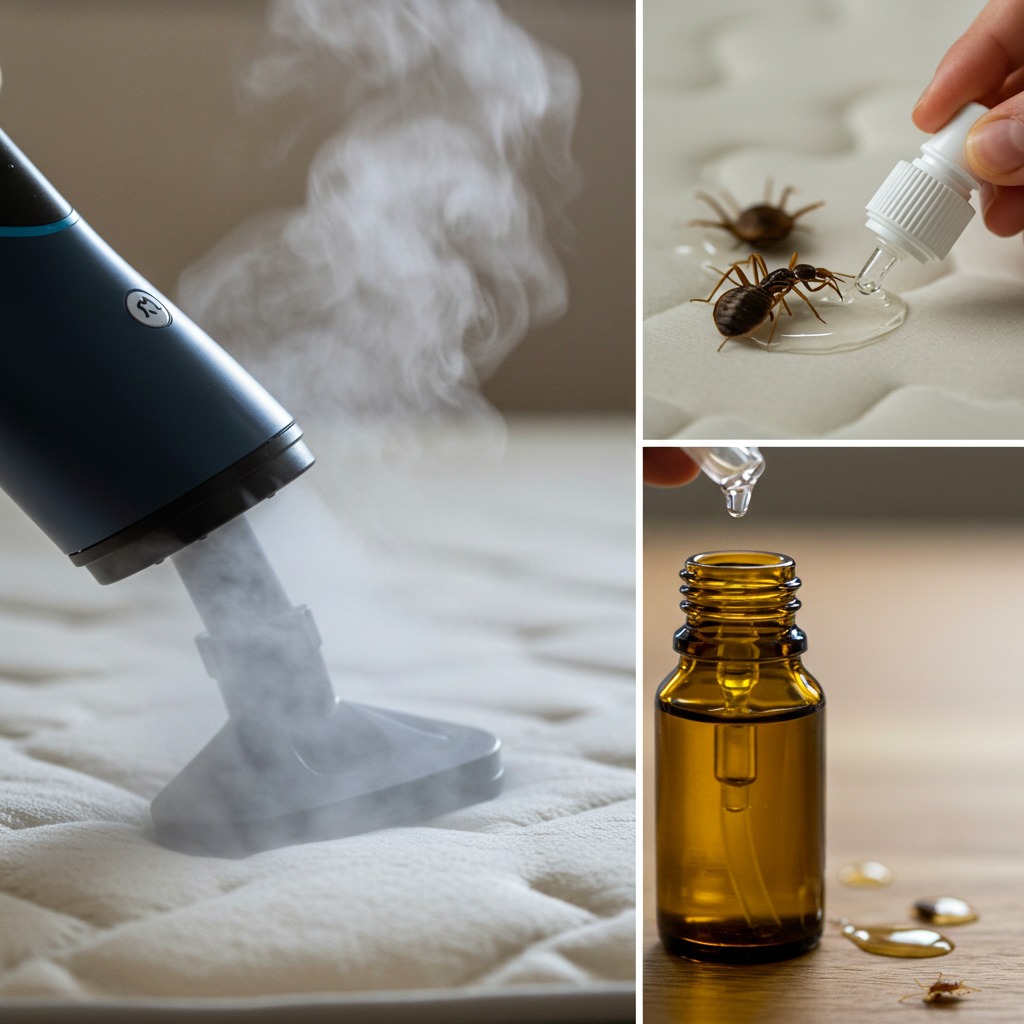ADVERTISEMENT
### **Why Are Bedbugs So Hard to Get Rid Of?**
Bedbugs are notorious for being difficult to eliminate for several reasons:
1. **Resilience**: Bedbugs are incredibly resilient. They can survive for months without feeding, making them difficult to starve out. Even if you don’t notice them immediately, they can continue to breed and spread.
2. **Hiding Places**: Bedbugs are experts at hiding in small cracks and crevices, making them difficult to detect. Even when you clean and inspect, you might miss their hiding spots.
3. **Rapid Reproduction**: Bedbugs reproduce quickly, with females laying up to 5 eggs per day. Their ability to multiply rapidly means that even a small infestation can grow into a large one in a short period of time.
4. **Resistance to Pesticides**: In recent years, bedbugs have developed a resistance to many common pesticides. This means that traditional chemical treatments are not as effective as they once were.
Given these challenges, it’s essential to find an effective and natural solution that can eliminate bedbugs quickly and prevent future infestations.
## **The Secret Ingredient: Diatomaceous Earth**
The ingredient that can help eliminate bedbugs in record time—and that you likely already have in your cupboard or garden—is **diatomaceous earth** (DE). This natural substance has gained significant attention in recent years for its ability to combat bedbugs and other pests.
### **What Is Diatomaceous Earth?**
Diatomaceous earth is a fine, white powder made from the fossilized remains of tiny aquatic organisms called diatoms. These organisms have hard, silica-based exoskeletons, and when they die, their remains are ground into a fine powder. DE is widely used in various industries, including agriculture, pest control, and even in personal care products.
There are two types of diatomaceous earth: **food grade** and **industrial grade**. **Food grade diatomaceous earth** is safe for humans and pets, while **industrial grade diatomaceous earth** is toxic and should not be used for pest control in homes. For this reason, it’s important to only use **food grade diatomaceous earth** for eliminating bedbugs.
### **How Does Diatomaceous Earth Work on Bedbugs?**
Diatomaceous earth works through a mechanical process rather than a chemical one. The fine powder consists of microscopic, sharp-edged particles that cut into the exoskeletons of insects, including bedbugs. When bedbugs come into contact with the powder, these sharp particles cause tiny cuts in their exoskeletons, leading to dehydration and eventually death.
The effectiveness of diatomaceous earth lies in its ability to physically damage the bedbugs’ outer shells. Unlike chemicals that might be harmful to humans and pets, diatomaceous earth is non-toxic to mammals but deadly to insects with exoskeletons, such as bedbugs, fleas, and ants.
### **Why Is Diatomaceous Earth Effective for Bedbug Control?**
1. **Natural and Non-Toxic**: Unlike chemical pesticides, diatomaceous earth is completely natural and safe to use around humans and pets. It doesn’t pose any health risks when used as directed.
2. **Long-Lasting**: Once applied, diatomaceous earth can remain effective for weeks, as long as it’s kept dry. Bedbugs that crawl through the powder will continue to suffer from dehydration until they die, making it an effective long-term solution.
3. **No Resistance**: Bedbugs cannot build resistance to diatomaceous earth, unlike many chemical pesticides. This means that it remains a reliable method for bedbug control over time.
4. **Works Fast**: While it may take a few days to see the full effect, diatomaceous earth begins working almost immediately upon contact with bedbugs. As they walk through the powder, they begin to dehydrate, and the effects become noticeable in a few days.
—
## **How to Use Diatomaceous Earth to Eliminate Bedbugs**
### **What You Will Need**:
– Food grade diatomaceous earth (DE)
– A fine dusting applicator or sifter (optional but helpful)
– Gloves and a mask (to avoid inhaling the fine dust)
– A broom and dustpan (for cleaning up excess DE)
– A vacuum cleaner (for removing any excess DE once the treatment period is over)
### **Step-by-Step Guide**:
#### 1. **Identify Problem Areas**
Start by identifying the areas where bedbugs are most likely hiding. Bedbugs are typically found in the following locations:
– Mattress seams and crevices
– Box springs and bed frames
– Upholstered furniture
– Baseboards and cracks in walls
– Behind wallpaper or other wall coverings
For Complete Cooking STEPS Please Head On Over To Next Page Or Open button (>) and don’t forget to SHARE with your Facebook friends
